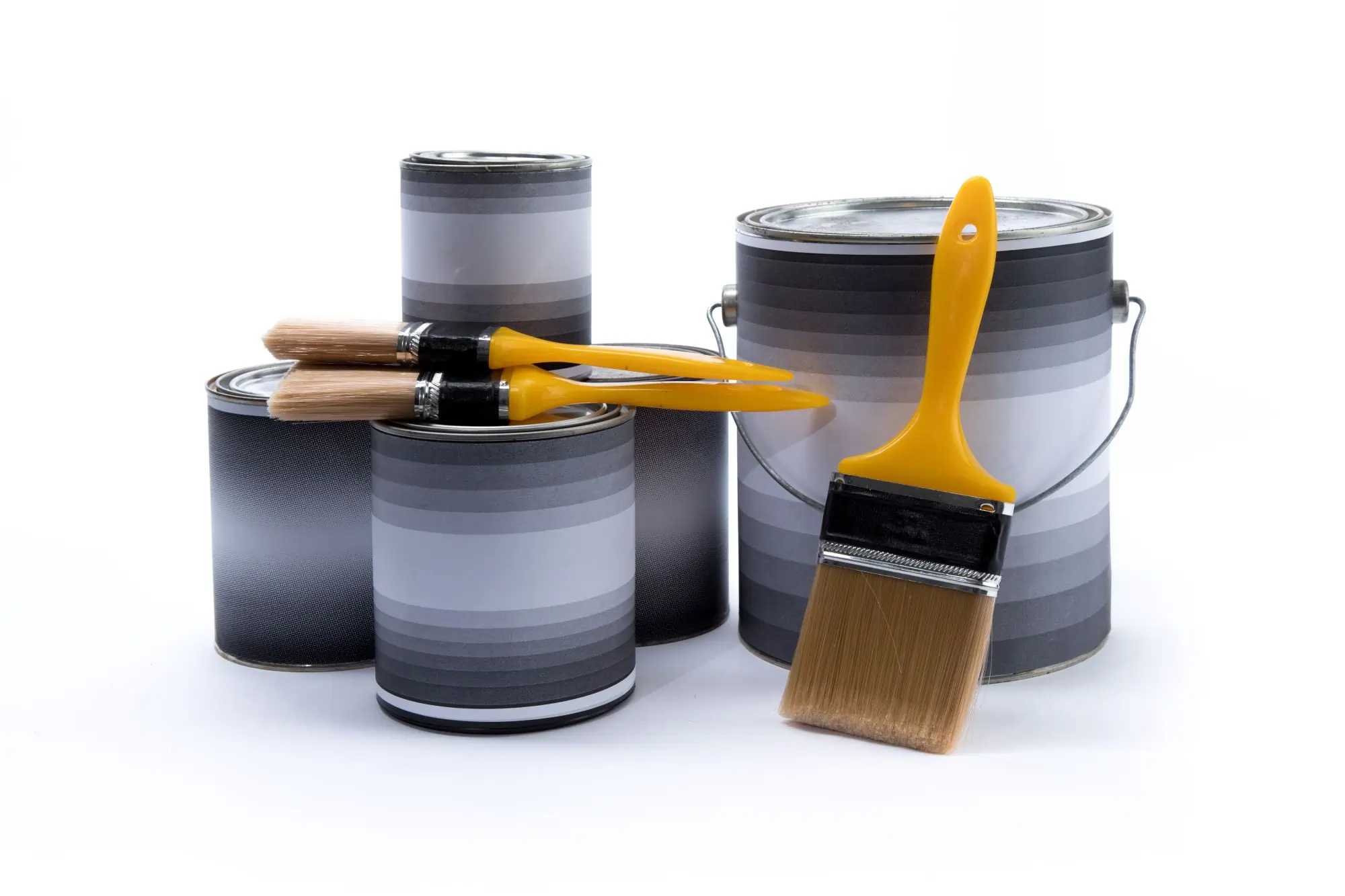At 4 Brothers Painting, we understand that the type of paint you choose has a major impact on your project’s final look, durability, and maintenance. The two most common options are latex (water-based) and oil-based (alkyd) paints. Each performs differently when it comes to drying time, durability, odor, cleanup, and environmental impact. Knowing these differences helps homeowners and property managers make the best choice for walls, trim, and exterior surfaces.
What Makes Latex and Oil-Based Paints Different
Latex paint, often called water-based paint, uses water as its main solvent. Oil-based paint, or alkyd paint, uses natural oils or synthetic resins that harden into a strong, glossy film. Because of these distinct bases, each behaves differently once applied.
Latex paints dry faster, emit less odor, and are easier to clean up. Oil-based paints take longer to dry but level beautifully, leaving a smooth, durable finish that stands up to wear. Both have specific uses depending on the surface, environment, and finish required.
Drying Time and Application
Latex paint dries within one to two hours and can be recoated the same day. This makes it ideal for fast projects and occupied spaces where downtime must be minimized.
Oil-based paint can take up to 24 hours to fully dry between coats, but it provides a uniform finish that hides brush marks. Its slow cure time allows for self-leveling, which produces the glossy, professional appearance often preferred on trim or cabinetry.
Surface Preparation and Adhesion
Proper surface preparation affects how well either paint type performs. Latex paint adheres best to clean, dry, and slightly porous surfaces such as drywall or primed plaster. It can tolerate mild surface moisture, which makes it ideal for areas prone to humidity.
Oil-based paint bonds strongly to glossy or previously painted surfaces but often requires a compatible primer to prevent peeling or poor adhesion. It performs well on wood, metal, and surfaces needing a hard, sealed finish. Taking time to prepare the surface correctly ensures the coating adheres evenly and lasts longer.
Durability and Finish Quality
Oil-based paint is known for its durability. It forms a hard shell that resists scuffs, scratches, and moisture, making it perfect for high-traffic areas, baseboards, doors, and furniture.
Modern latex paints have improved significantly. Premium water-based formulas now resist fading, cracking, and peeling while maintaining flexibility on materials that expand and contract. Latex paint holds its color better outdoors because it resists UV damage, while oil-based paints can yellow over time, especially in low-light areas.
Sheen levels also play a role in durability. Gloss and semi-gloss finishes are more durable and washable, while flat or matte finishes hide imperfections but are less resistant to abrasion. Both latex and oil-based options are available in various sheens, allowing customization based on surface type and use.
Odor, VOCs, and Environmental Impact
Oil-based paints release strong odors and higher levels of volatile organic compounds (VOCs) during application and drying. Proper ventilation and protective gear are necessary to ensure safe use.
Latex paints are low in VOCs, creating less odor and a healthier environment for occupants. They comply with modern environmental regulations and are often recommended for interior use where air quality is important. Many professional painters, including 4 Brothers Painting, prioritize low-VOC and zero-VOC options to protect both clients and workers.
Cleanup and Maintenance
Latex paint is easy to clean using only soap and water. Brushes, rollers, and trays can be rinsed quickly, reducing waste and downtime between coats.
Oil-based paint requires paint thinner or mineral spirits for cleanup. These products dissolve the oils but must be disposed of carefully to meet environmental regulations. This difference makes latex paint more convenient for homeowners and maintenance crews managing multiple projects.
Best Uses for Each Type
Latex and oil-based paints both have ideal applications depending on surface type and performance needs:
-
Latex paint: interior walls, ceilings, and exteriors exposed to moisture or sunlight
-
Oil-based paint: trim, doors, cabinets, metal surfaces, and high-traffic areas that need added toughness
By choosing the correct paint type for each surface, you ensure better coverage, longevity, and overall finish quality.
Professional Guidance from 4 Brothers Painting
4 Brothers Painting specializes in both residential painting and commercial painting, providing expert recommendations based on your property’s needs. Our team uses trusted brands, low-VOC products, and precise application methods to achieve long-lasting, professional results.
Whether you’re repainting your home’s walls or updating a business interior, our experienced painters can help you choose between latex and oil-based finishes for optimal durability and appeal.
For expert advice and a detailed quote, contact 4 Brothers Painting today.


